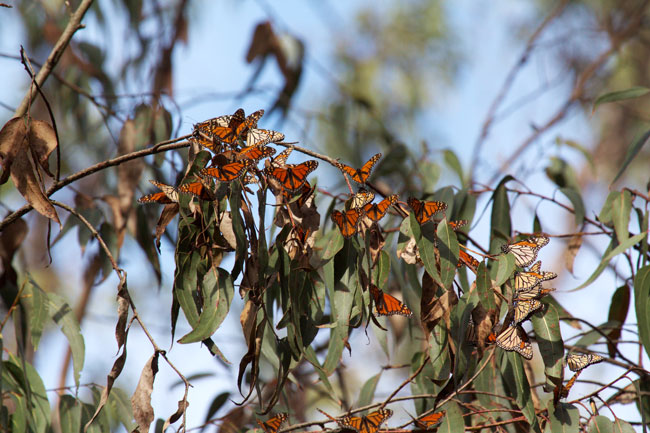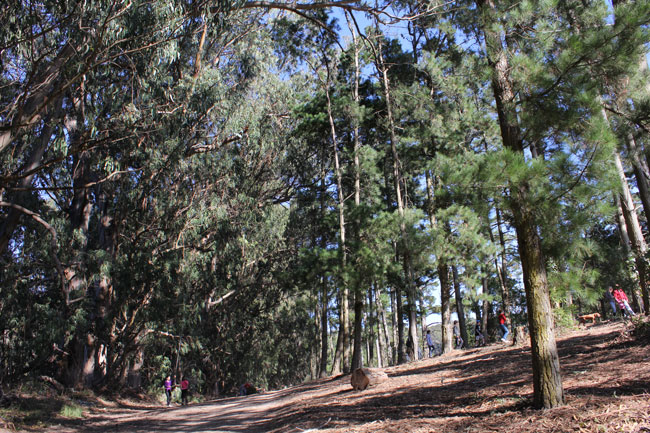The fact that the monarch butterfly migrates is well-known. The tale of this seemingly fragile creature winging its way across hundreds or thousands of miles enthralls children and adults alike, and has led to a massive level of interest by people everywhere in growing milkweed and other flowers to support this annual cycle. But monarchs need more than just milkweed and nectar. They spend four months of each year clinging to branches of trees in the high-elevation forests of Mexico or in groves along a sliver of the California coastline. Without suitable places to overwinter, the migration may collapse.
Scattered along the California coast are groves of eucalyptus, cypress, and pine which provide winter shelter to hundreds of thousands of monarch butterflies born each summer across the western North America. While this may sound like a lot of butterflies, in the 1980s, this population numbered in the millions. In the last thirty years, the population has declined by over 95% and the migratory monarch population is now at a high risk of extinction.

Clouds of monarchs filling the air is a wondrous sight for visitors and many overwintering sites have become popular tourist attractions. Having so many butterflies concentrated in such small areas also means monarchs are especially vulnerable during the winter. The grove at Pismo Beach, for example, may host 10% of the California overwintering population in a typical year. Being concentrated along the coast makes the butterflies susceptible to storms and disturbance, and dozens of coastal overwintering sites have already been lost due to urban, ex-urban, and—to a lesser extent—agricultural development over the past decades; others are senescing as drought and age take their toll. Protection and management of existing sites is crucial to prevent further loss.
To guide land managers, landowners, and community groups who wish to implement management actions to protect, improve, and restore monarch overwintering habitat, the Xerces Society partnered with Stu Weiss of Creekside Center for Earth Observation to publish Protecting California’s Butterfly Groves: Management Guidelines for Monarch Butterfly Overwintering Habitat.
The guidelines provide an overview of the biology and conservation of western monarchs; step-by-step guidance for developing a site-specific management plan, and overall guidance on topics including tree management, shrub and forb management, and visitor and public access issues. The document also includes a list of monarch-attractive native nectar plants suitable for coastal areas.
Monarch groves are part of a dynamic ecosystem, and active management of groves is often required to maintain the environmental conditions that monarchs require to survive. Protecting California’s Butterfly Groves will help site managers become familiar with overwintering monarch habitat needs and provides a roadmap to develop site-specific management plans to benefit monarchs in both the short- and long-term. Ensuring sufficient, high-quality overwintering habitat is essential if we hope to recover the western monarch population.

The new guidelines were developed through a combination of expert opinion and studies of monarch overwintering site requirements in Mexico and in California. The document benefited from the review and input of many knowledgeable biologists, including Mia Monroe (who initiated and still coordinates the Western Monarch Thanksgiving Count along with the Xerces Society), Francis Villablanca (a professor at Cal Poly and director of Monarch Alert), and Dan Meade (who has studied overwintering monarchs for decades). Protecting California’s Butterfly Groves replaces the previous overwintering sites guidance document (Conservation and Management Guidelines, published in 1993) and complements the 2016 report, State of the Monarch Butterfly Overwintering Sites in California, both published by the Xerces Society. Overwintering sites are complex, dynamic habitats and the understanding of their management is constantly evolving. We anticipate updating the guidelines in the light of additional research and experience of current restoration efforts.



